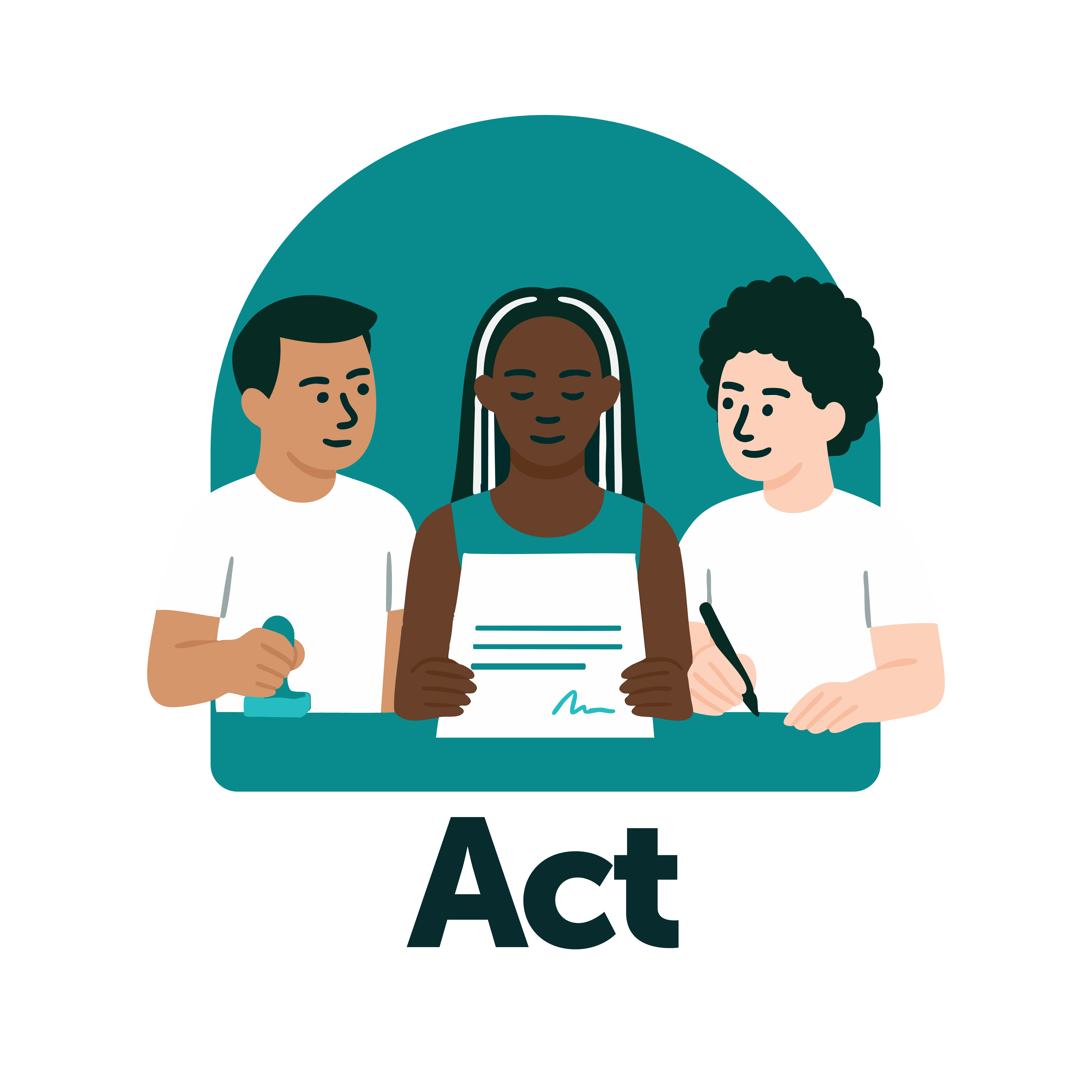Education Systems Changemakers Series: Phase 3 - Act
Introduction Phase 1 - Power Up Phase 2 - Level Up Phase 3 - Act Phase 4 - Evolve

From Insight to Implementation: Acting with Intention, Collaboration, and Learning
If you have been following along with Phases 1 and 2, you have clarified your system, surfaced root causes, and identified potential points of intervention to address priority education issues.
Now it is time to take action—strategically, collaboratively, and with a learning mindset. In this phase, we move from insight to implementation by identifying smart entry points, co-creating with others, and staying adaptive through feedback and reflection.
In systems change work, progress comes from doing the right things, in the right places, with the right people—one step at a time.
What Do Strategic Systems Leaders Do Differently?
From our research and experience, changemakers who lead effective action focus on three critical steps:
They spot leverage points.
They ask: Where is a small, smart intervention likely to ripple across the system? What kind of change will shift relationships, incentives, or mindsets and not just individual programs?They build action plans with others.
They ask: Who else needs to be part of this effort? How will we collaborate, share responsibility, and adapt together over time?They design for learning.
They ask: What information will help us understand what is changing? How can we stay flexible and responsive as we go?
These steps help changemakers act boldly and adapt wisely—even in uncertain or evolving environments.
MEL Approaches That Support Systems Change
Traditional evaluation tools often fall short in complex environments. That is why systems changemakers use approaches that prioritize flexibility, participation, and learning.
Here are five monitoring, evaluation, and learning (MEL) methods that can help you make sense of shifting dynamics and stay aligned with your changemaker goals:
- Developmental Evaluation: Embeds a learning partner in your team to generate real-time feedback and adapt strategy as the system responds.
Best for: Initiatives in early stages or evolving environments - Outcome Mapping: Tracks behavioral and relational shifts across your system using progress markers—not just end outcomes.
Best for: Behavioral change and stakeholder engagement - Ripple Effect Mapping: A participatory, visual process that helps you map indirect and emerging changes.
Best for: Visualizing influence across actors and sectors - Most Significant Change: Uses stories to reveal which changes matter most to stakeholders and why.
Best for: Elevating lived experience and shared meaning - Outcome Harvesting: Identifies what has changed, then traces how your work contributed.
Best for: Adaptive contexts without predefined outcomes
These approaches are not just tools—they reflect a mindset of learning in motion. You can mix and match depending on your timeline, context, and what your system needs most right now.
Want to dig deeper?
Download the full MEL for Systems Change: A Quick Guide for Changemakers to explore additional information about each approach with examples and links to key resources for each method.
System Shifts Guided by These Strategies
Across IREX and our global network, changemakers are designing actions that respond to real system challenges and monitoring and evaluating their impact to learn and improve.
In Jordan, IREX and School-to-School International supported the Government of Jordan in conducting a system-wide assessment of foundational literacy and numeracy. The resulting data will help the Ministry of Education target resources to regions where students are performing below average, with the goal of improving outcomes, particularly for those in the bottom quartile.
In Zambia, Teaching at the Right Level (TaRL) Africa partnered with the Ministry of Education—with support from the LEGO Foundation and UBS Optimus Foundation—to improve foundational learning. They identified teacher grouping practices and classroom-based assessment as leverage points, embedding them into training, policy, and school routines. By adapting in real time based on teacher feedback and local realities, they achieved sustained improvements in literacy and numeracy.
These examples show that by choosing the right leverage points, co-designing with partners, and committing to ongoing learning, changemakers can unlock long-term, meaningful transformation.
Ready To Try It Out?
We welcome you to open your Education Systems Changemakers Challenge Workbook and complete:
Step 6: Spot Your Leverage Points
Identify the highest-potential places to intervene in your system. Use the “Change Instincts” check-in to reflect on your personal approach to change.
Step 7: Chart Your Change Course
Reflect on your collaboration readiness, map key relationships, and define where to deepen engagement for shared action.
Step 8: Stay on Track
Consider how you will gather meaningful evidence and stay adaptable using systems-friendly evaluation methods.
Coming Soon
In Phase 4 – Evolve, we will reflect on your progress, iterate your approach, and celebrate how systems are shifting because of your leadership.
Follow us on LinkedIn @IREX and share your leverage point, relationship map, or learning strategy using #IREXSystemsChangemakers.
You are well on your way to acting with a systems changemaker mindset. Let's keep growing together.